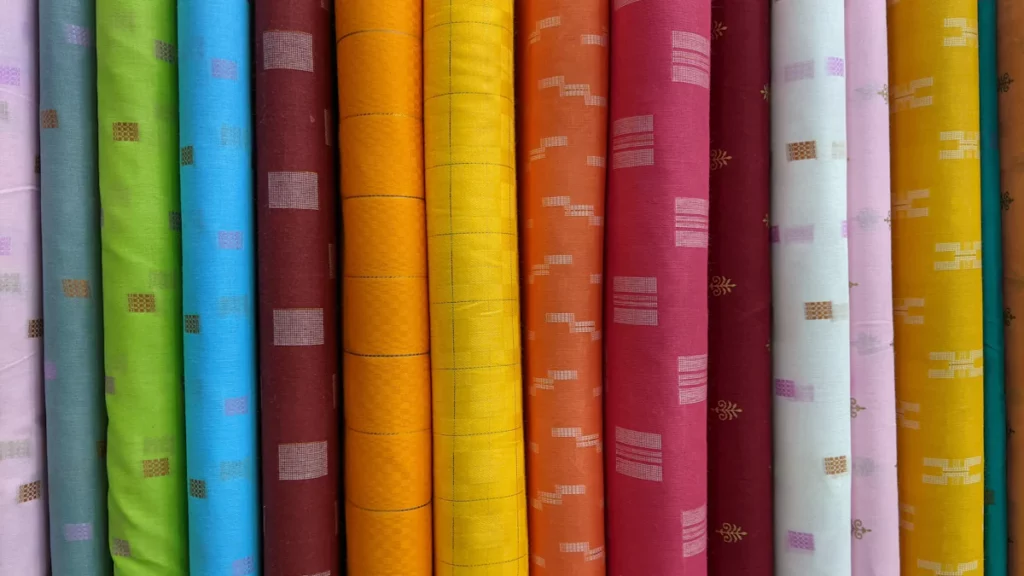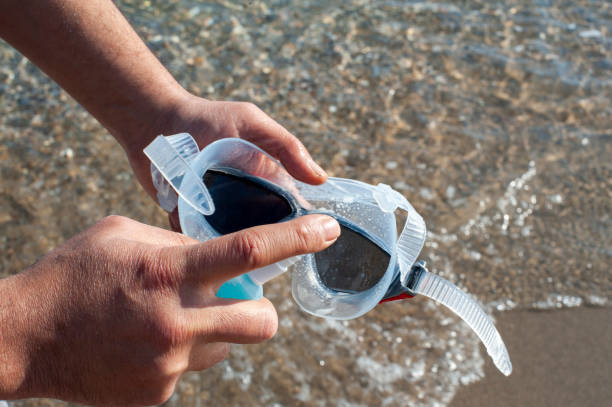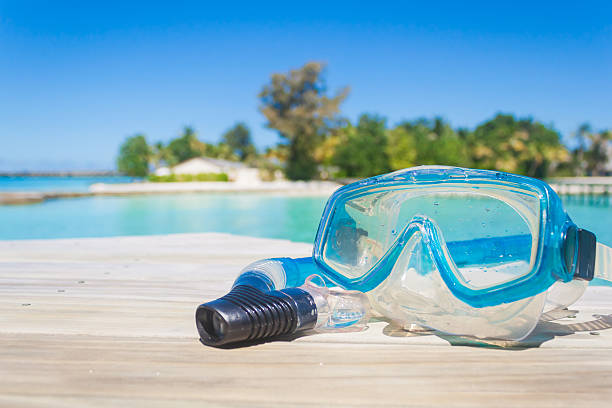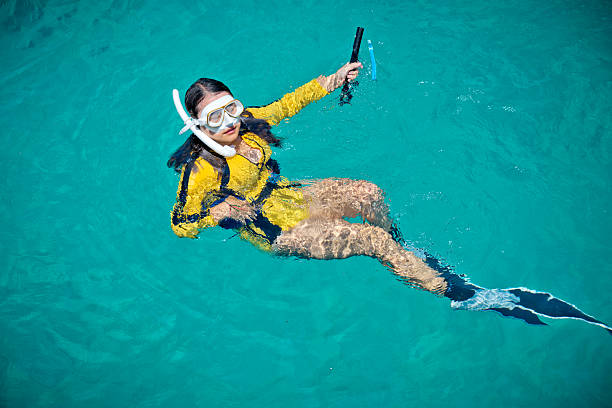
Fonte dell'immagine: pexels
Quando si tratta di costumi da bagno, capire il Tutto quello che devi sapere sui tessuti per costumi da bagno È fondamentale. Il tessuto del tuo costume da bagno gioca un ruolo significativo per il tuo comfort e le tue prestazioni. La maggior parte dei costumi da bagno moderni è realizzata con un mix di nylon, poliestere ed elastan per garantire resistenza ed elasticità. Scegliere il tessuto giusto può migliorare la tua esperienza di nuoto offrendo l'equilibrio ideale tra flessibilità e supporto. Immergiamoci nel mondo dei tessuti per costumi da bagno per svelarne l'importanza e scoprire i fattori chiave che influenzano la scelta del tuo costume.
Tipi di tessuti per costumi da bagno

Fonte dell'immagine: pexels
Nylon
Proprietà del nylon
- Materiale leggero e resistente
- Tessuto ad asciugatura rapida per la massima praticità
- Offre comfort, longevità e prestazioni
Benefici del nylon
- Scelta ideale per la produzione di costumi da bagno
- Garantisce durata e flessibilità per i nuotatori
Poliestere
Proprietà del poliestere
- Tessuto durevole e resistente all'esposizione al cloro
- Caratteristiche di mantenimento della forma e prevenzione del pilling
Vantaggi del poliestere
- Investimento a lungo termine grazie alla resistenza alla muffa
- Miscelato con elastan per qualità migliorate
Elastan (Spandex)
Proprietà dell'elastan
- Tessuto super elastico noto come Spandex o Lycra
- Materiale resistente al cloro e allo scolorimento
Benefici dell'elastan
- Ha rivoluzionato l'industria della moda con qualità elastiche
Polibutilentereftalato (PBT)
- Noto per la sua eccezionale durata e resistenza agli agenti chimici
- Offre un'eccellente ritenzione della forma e proprietà di resistenza del colore
- Offre una vestibilità comoda con prestazioni di lunga durata
Neoprene
- Scelta popolare per mute e costumi termici
- Materiale isolante che mantiene il corpo caldo in acqua fredda
- Resistente e flessibile, consente libertà di movimento durante il nuoto
Scegliere il tessuto giusto
Comfort
- La traspirabilità è essenziale nei tessuti per costumi da bagno per garantire una corretta ventilazione e gestione dell'umidità. Questa caratteristica permette alla pelle di respirare, prevenendo il fastidio dovuto all'accumulo di sudore durante le attività in acqua.
- L'elasticità gioca un ruolo fondamentale nel comfort del costume da bagno, offrendo flessibilità e libertà di movimento. Un tessuto con buone proprietà elastiche si adatta alla forma del corpo, offrendo una vestibilità aderente senza limitare i movimenti.
Durata
- La resistenza al cloro è un fattore chiave nella scelta dei tessuti per costumi da bagno, soprattutto per chi nuota regolarmente in piscina. I tessuti resistenti all'esposizione al cloro mantengono colore e forma, garantendo longevità e prestazioni anche dopo un uso prolungato.
- La protezione UV è fondamentale per i tessuti dei costumi da bagno, in quanto protegge la pelle dai raggi solari nocivi. Scegliere tessuti con protezione UV ti protegge da scottature e danni alla pelle a lungo termine, rendendoli ideali per le attività acquatiche all'aperto.
Costo
- Il budget è un fattore importante nella scelta dei tessuti per costumi da bagno. Sebbene i materiali di alta qualità possano avere un prezzo più elevato, spesso offrono maggiore durata e prestazioni migliori, rendendoli una scelta conveniente nel lungo periodo.
- La longevità è un aspetto importante da considerare quando si parla di costo del tessuto. Investire in tessuti resistenti garantisce che il costume da bagno duri più a lungo, riducendo la frequenza delle sostituzioni e consentendo di risparmiare denaro nel tempo.
Opzioni sostenibili ed ecologiche

Fonte dell'immagine: unsplash
Poliestere riciclato
- Utilizzando poliestere riciclato nella produzione di costumi da bagno contribuisce alla sostenibilità ambientale riducendo gli sprechi e minimizzando l'utilizzo di nuove risorse.
- Il processo di creazione poliestere riciclato consiste nel trasformare le bottiglie di plastica scartate in un tessuto di alta qualità, offrendo un'alternativa ecosostenibile ai consumatori attenti all'ambiente.
- Optando per poliestere riciclato i costumi da bagno non solo promuovono iniziative di riciclo, ma garantiscono anche un impatto positivo sul pianeta sostenendo pratiche di moda sostenibili.
Econyl (nylon riciclato)
- Econyl, un tessuto di nylon rigenerato, è ricavato da materiali di scarto recuperati, come reti da pesca e rifiuti plastici industriali.
- Scegliendo Econyl con i tuoi costumi da bagno partecipi attivamente all'economia circolare, in cui i materiali vengono riutilizzati e rigenerati per ridurre l'impatto ambientale.
- Abbracciare Econyl come opzione sostenibile dimostra il tuo impegno verso scelte di moda etiche, indossando costumi da bagno di alta qualità in linea con i principi eco-compatibili.
Fibre naturali (bambù, canapa)
- Incorporando fibre naturali come bambù e canapa nei costumi da bagno offre alternative biodegradabili che riducono al minimo l'impatto ambientale rispetto ai tradizionali tessuti sintetici.
- Bambù e canapa I tessuti sono noti per la loro traspirabilità, le proprietà anti-umidità e le caratteristiche antimicrobiche, offrendo comfort e sostenibilità in un unico prodotto.
- Scegliere costumi da bagno realizzati da bambù o canapa sostiene la coltivazione di risorse rinnovabili e riduce la dipendenza da materiali non biodegradabili, rendendolo una scelta consapevole per le persone attente all'ambiente.
Tessuti performanti
Tessuti a compressione
I tessuti a compressione sono progettati per migliorare le prestazioni in acqua offrendo un supporto mirato ai principali gruppi muscolari. Questi tessuti agiscono applicando una leggera pressione per migliorare la circolazione sanguigna e ridurre le vibrazioni muscolari durante il nuoto. L'effetto compressivo può contribuire ad aumentare la resistenza e la velocità, consentendo di mantenere una posizione del corpo più fluida per periodi più lunghi. Inoltre, questi tessuti favoriscono il recupero muscolare dopo l'attività fisica, favorendo un'efficace rimozione dell'acido lattico. Sfrutta i vantaggi dei tessuti a compressione per ottimizzare la tua esperienza di nuoto e raggiungere prestazioni al top.
Materiali idrodinamici
I materiali idrodinamici sono progettati per ridurre al minimo la resistenza aerodinamica e l'attrito in acqua, consentendo ai nuotatori di muoversi in modo rapido ed efficiente in piscina. Questi tessuti avanzati riducono l'attrito dell'acqua sul corpo, migliorando la scorrevolezza e la velocità a ogni bracciata. Indossando costumi da bagno realizzati con materiali idrodinamici, puoi sperimentare una migliore propulsione e agilità in acqua. Sfrutta la tecnologia all'avanguardia dei materiali idrodinamici per massimizzare le tue prestazioni in acqua e superare i tuoi avversari con facilità.
Tessuti termoregolatori
I tessuti termoregolatori sono progettati per offrirti il massimo comfort in diverse condizioni di nuoto, adattandosi alla tua temperatura corporea. Questi materiali innovativi aiutano a regolare lo scambio di calore tra la pelle e l'acqua circostante, garantendo un equilibrio termico ottimale durante l'intera nuotata. Che tu ti alleni in acque fredde o calde, i tessuti termoregolatori offrono un comfort costante, prevenendo il surriscaldamento o il raffreddamento. Sfrutta la versatilità di questi tessuti per goderti un'esperienza di nuoto piacevole indipendentemente dalle variazioni di temperatura esterna.
Trattamenti e tecnologie dei tessuti
Finiture idrorepellenti
- Tessuti per costumi da bagno Sono progettati per respingere efficacemente l'acqua, garantendo un'asciugatura rapida e un comfort ottimale dopo il nuoto. Questa caratteristica impedisce l'assorbimento eccessivo di umidità, mantenendoti leggero e agile in acqua.
- Tessuti ad asciugatura rapida Sono trattati per assorbire rapidamente il sudore e l'acqua, favorendo un'evaporazione efficiente e garantendo un'esperienza post-nuoto confortevole. Dite addio ai brividi in un costume bagnato con queste innovative finiture idrorepellenti.
Trattamenti antimicrobici
- Tessuti per costumi da bagno vengono sottoposti a trattamenti antimicrobici per inibire la proliferazione di batteri e microbi che causano cattivi odori. Grazie a questa tecnologia, il tuo costume rimane fresco e igienico anche dopo molteplici utilizzi.
- Scopri i vantaggi dei tessuti trattati con antimicrobico che danno priorità all'igiene e alla pulizia, consentendoti di goderti le tue attività in acqua senza preoccuparti di odori sgradevoli o accumulo di batteri.
Tecnologie a colori resistenti
- Nylon, una scelta preferita per i costumi da bagno, eccelle nella resistenza dei colori, mantenendo le sue tonalità vivaci anche dopo una prolungata esposizione alla luce solare e al cloro. Questa resistenza garantisce che il tuo costume mantenga il suo fascino estetico nel tempo.
- Scegli costumi da bagno realizzati con tecnologie che mantengono il colore a lungo e non sbiadiscono, per un abbigliamento da spiaggia elegante e vivace stagione dopo stagione.
Scelta dei tessuti per diversi tipi di costumi da bagno
Nuoto agonistico
- Optare per Tessuti ad asciugatura rapida che assorbono efficacemente il sudore e l'acqua, garantendo una rapida asciugatura dopo l'attività. Questa caratteristica riduce al minimo il tempo trascorso con il costume bagnato, migliorando il comfort e le prestazioni durante il nuoto agonistico.
- Scegli costumi da bagno realizzati in Nylon, un materiale popolare noto per la sua eccezionale elasticità, morbidezza e proprietà idrorepellenti. Il tessuto in nylon offre resistenza e asciugatura rapida, rendendolo la scelta ideale per sessioni di nuoto intense.
- Abbraccio Tessuti elasticizzati e performanti Con capacità di asciugatura rapida, protezione UV e proprietà batteriostatiche, questi tessuti offrono la flessibilità e il supporto necessari per il nuoto agonistico, garantendo al contempo un'igiene ottimale e una protezione solare.
Abbigliamento da spiaggia casual
- Scegli costumi da bagno elasticizzati in 4 direzioni e con una percentuale di spandex di almeno 10% per ottenere il massimo comfort e flessibilità per le tue uscite casual in spiaggia. Cerca tessuti che assorbano efficacemente l'acqua mantenendo la forma per migliorare la tua esperienza in spiaggia.
- Considera materiali che offrono protezione UV per proteggere la pelle dai raggi solari nocivi durante le attività ricreative in spiaggia. Optare per costumi da bagno realizzati con tessuti che proteggono dal sole garantisce sia stile che protezione dai raggi solari.
- Esplora le opzioni di costumi da bagno specificamente etichettati per l'abbigliamento da spiaggia per goderti un mix di design all'avanguardia con caratteristiche funzionali pensate per il relax in riva al mare.
Surf e sport acquatici
- Dai priorità a costumi da bagno realizzati con materiali resistenti come neoprene o miscele di poliestere per resistere alle sollecitazioni del surf e degli sport acquatici. Questi tessuti offrono isolamento, flessibilità e resistenza agli ambienti acquatici più ostili.
- Cerca costumi con proprietà idrodinamiche che riducano la resistenza in acqua, migliorando velocità e agilità durante le sessioni di surf. I materiali idrodinamici ottimizzano le prestazioni riducendo al minimo la resistenza in condizioni di surf difficili.
- Scegli tessuti progettati con tecnologie di termoregolazione per adattarsi alle diverse temperature dell'acqua durante le diverse attività acquatiche. Mantieni il comfort durante le tue avventure con costumi da bagno progettati per regolare efficacemente lo scambio termico.
Costumi da bagno per bambini
- Tessuti ad asciugatura rapidaQuesti tessuti sono progettati per allontanare il sudore e l'acqua dal corpo, garantendo una rapida asciugatura dopo il bagno. Evaporando rapidamente l'umidità, riducono il tempo trascorso a tremare con il costume bagnato dopo il bagno.
- Materiale in nylon: Il nylon è una scelta popolare per i costumi da bagno per bambini grazie alla sua eccezionale elasticità, alla consistenza morbida e alle proprietà idrorepellenti. Si asciuga rapidamente, è resistente e facile da pulire, il che lo rende ideale per i bambini attivi.
- Tessuti elasticizzati e performanti: Esplora le collezioni di costumi da bagno realizzate con tessuti elasticizzati e performanti che offrono capacità di asciugatura rapida, protezione UV e proprietà batteriostatiche. Questi tessuti offrono flessibilità e supporto per le avventure acquatiche del tuo bambino.
- Tessuto per costumi da bagno con elasticità quadridirezionale: Opta per tessuti per costumi da bagno elasticizzati in 4 direzioni e con una percentuale di spandex di almeno 10%. Cerca materiali che assorbano efficacemente l'acqua mantenendo la forma per garantire il massimo comfort durante il gioco in acqua.
Tutto quello che devi sapere sui tessuti per costumi da bagno
Riepilogo dei punti chiave
- Varietà di tessuti per costumi da bagno:Il mercato dei costumi da bagno offre un'ampia gamma di tessuti, tra cui cotone, nylon, spandex, poliestere e altro ancora.
- Scelta ideale del tessuto: Si consiglia di optare per un misto poliestere/elastan per le sue proprietà di resistenza ed elasticità.
- Composizione del tessuto:La maggior parte dei costumi da bagno moderni combina nylon, poliestere o poliammide con elastan per una maggiore elasticità.
Riassumendo la vasta gamma di tessuti per costumi da bagno, ogni materiale offre vantaggi unici per le tue avventure acquatiche. L'importanza di scegliere il tessuto giusto non può essere sottovalutata, poiché influisce sul comfort e sulle prestazioni in acqua. Per consigli finali, considera miscele di poliestere resistenti con elastan Per un'elasticità e una durata ottimali. Scegli tra nylon ad asciugatura rapida o spandex resistente allo scolorimento per migliorare la tua esperienza di nuoto. Ricorda, la scelta del tessuto giusto può fare la differenza nella tua esperienza di nuoto, garantendo stile e funzionalità a ogni bracciata.



